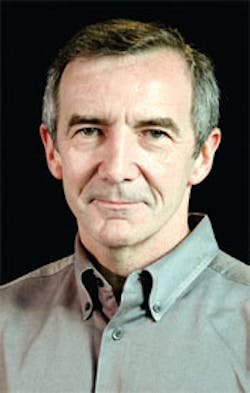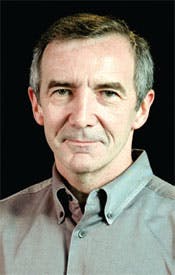Food for thought: The distance between a field and your plate
At least according to popular mythology. The truth of the matter is that most energy and greenhouse gases associated with food go into its production, not its transportation. And that goes equally for food bought at the local farmers’ market as well as for that picked from grocery-store shelves.
The issue of food miles has been thoroughly investigated by two environmental engineers at Carnegie Mellon University in the U. S. and by the Dept. for Environment, Food and Rural Affairs in the U. K. CMU researchers Christopher Weber and H. Scott Matthews found that the food-production phase contributed 83% of the average U. S. household’s annual carbon footprint for food consumption. Transportation as a whole accounted for only 11% of greenhouse-gas emissions associated with food. And final delivery from producer to retail contributes only 4% of that 11%.
It also emerges that transport by ship, rail, and air freight over long distances is efficient compared with trucking food a comparatively short distance to its final destination. The trucking phase is responsible for 71% of the total greenhouse gases generated while transporting food. Wholesaling and retailing operations accounted for just 5% of overall emissions.
CMU researchers as well found that globalization has increased the distance food travels by around 25% since 1997. But this has boosted greenhouse-gas emissions associated with transport by a mere 5%, simply because ocean shipping is far less energy intensive than overland trucking.
In the U. K., DEFRA examined the “food miles” question partly to see whether a “buy-local” movement in that country made any sense. DEFRA uncovered percentages similar to those of the CMU research, and also discovered that “buying local” could lead to more greenhouse-gas emissions rather than less. The reason is that a lot of produce in the U. K. must be grown in greenhouses rather than in open fields. The energy debt of a greenhouse is a deal-killer, greenhouse gas-wise.
The situation isn’t much better for produce grown in U. K. fields that must be put in cold storage until it is eventually consumed. U. K. residents generate fewer greenhouse gases shipping fresh apples in from New Zealand than putting British apples in a cooler. And when it comes to milk, U. K. dairy farmers use twice as much energy to produce a metric ton of milk solids than New Zealand farmers, says DEFRA.
The lesson from all this is that food should be grown where it is most economically virtuous to do so. And the packaging industry needn’t worry about “buy-local” movements cutting into the need for its products.
— Leland Teschler, Editor
About the Author
Leland Teschler
Lee Teschler served as Editor-in-Chief of Machine Design until 2014. He holds a B.S. Engineering from the University of Michigan; a B.S. Electrical Engineering from the University of Michigan; and an MBA from Cleveland State University. Prior to joining Penton, Lee worked as a Communications design engineer for the U.S. Government.

